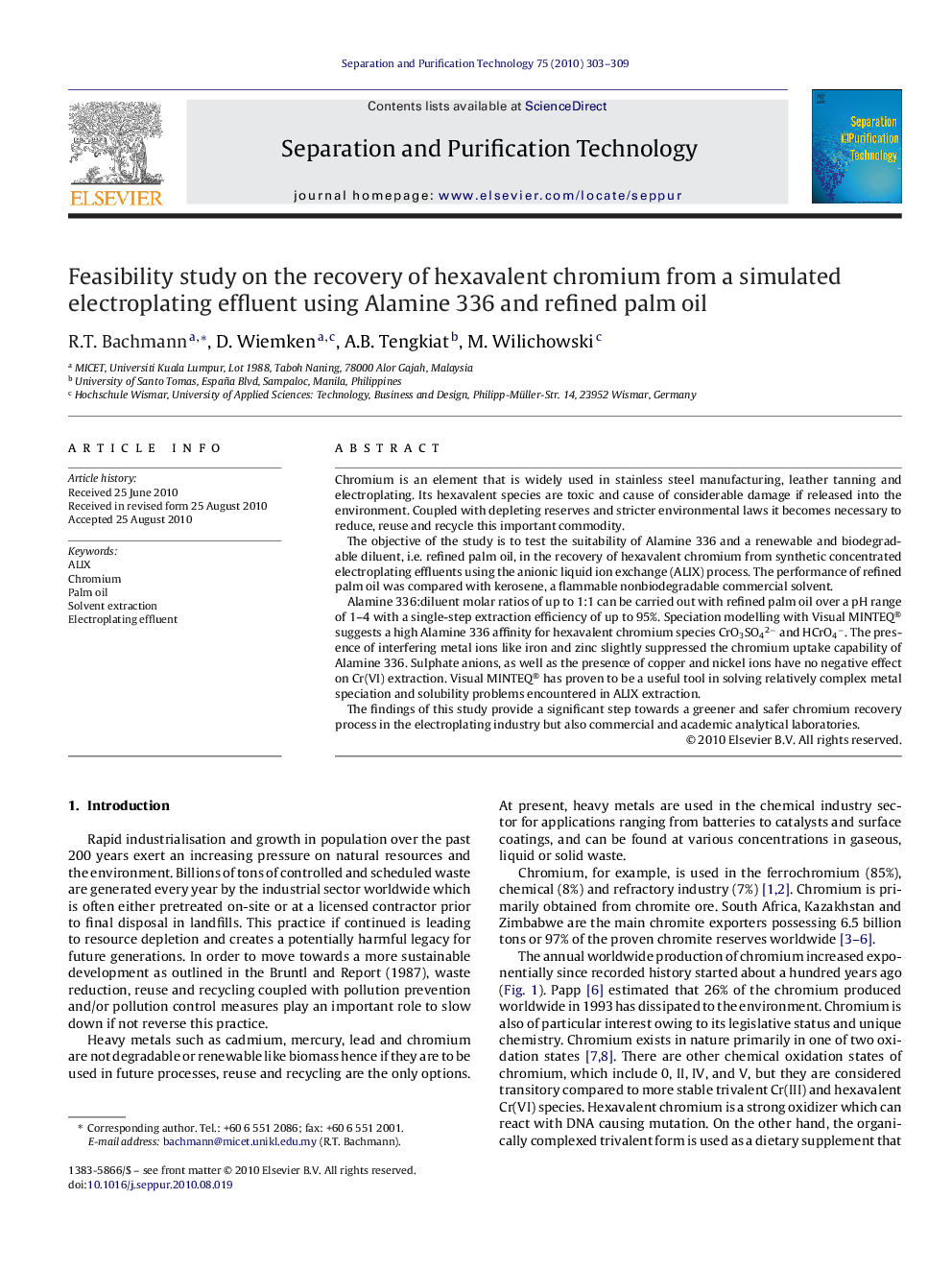| کد مقاله | کد نشریه | سال انتشار | مقاله انگلیسی | نسخه تمام متن |
|---|---|---|---|---|
| 642819 | 884341 | 2010 | 7 صفحه PDF | دانلود رایگان |

Chromium is an element that is widely used in stainless steel manufacturing, leather tanning and electroplating. Its hexavalent species are toxic and cause of considerable damage if released into the environment. Coupled with depleting reserves and stricter environmental laws it becomes necessary to reduce, reuse and recycle this important commodity.The objective of the study is to test the suitability of Alamine 336 and a renewable and biodegradable diluent, i.e. refined palm oil, in the recovery of hexavalent chromium from synthetic concentrated electroplating effluents using the anionic liquid ion exchange (ALIX) process. The performance of refined palm oil was compared with kerosene, a flammable nonbiodegradable commercial solvent.Alamine 336:diluent molar ratios of up to 1:1 can be carried out with refined palm oil over a pH range of 1–4 with a single-step extraction efficiency of up to 95%. Speciation modelling with Visual MINTEQ® suggests a high Alamine 336 affinity for hexavalent chromium species CrO3SO42− and HCrO4−. The presence of interfering metal ions like iron and zinc slightly suppressed the chromium uptake capability of Alamine 336. Sulphate anions, as well as the presence of copper and nickel ions have no negative effect on Cr(VI) extraction. Visual MINTEQ® has proven to be a useful tool in solving relatively complex metal speciation and solubility problems encountered in ALIX extraction.The findings of this study provide a significant step towards a greener and safer chromium recovery process in the electroplating industry but also commercial and academic analytical laboratories.
Figure optionsDownload as PowerPoint slideResearch highlights▶ The use of an environmentally friendly, non-hazardous solvent, refined palm oil, for the recovery of hexavalent chromium is studied for the first time. ▶ The chemical equilibrium modelling software Visual MINTEQ® was used successfully and for the first time in the field of liquid-liquid extraction of chromium (search carried out in Science Direct). ▶ Alamine 336, a reagent for which very limited publicly accessible data for hexavalent chromium extraction exist (based on SCOPUS, Google scholar), was successfully investigated.
Journal: Separation and Purification Technology - Volume 75, Issue 3, 20 November 2010, Pages 303–309